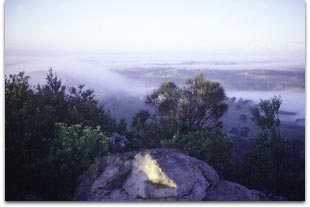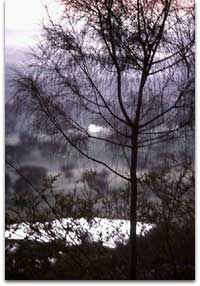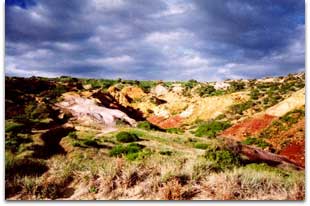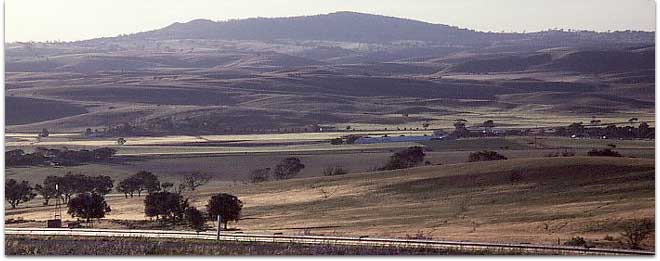 |
| Home | Online
Catalogue | Mount
Allan Community | Art
History Mount Barker | The Desert Star |
There are few stories left - at least few stories of the creation period which can be told. It was only twenty years after the Krinkes arrived that the last of the original inhabitants, the Peramangk disappeared. Diseases of various kinds took many of them; perhaps most. Others moved onto established missions or to other regions where slivers of their race survive.
They are there. Strange that the 'Krinke' whose name it now loosely carries, Collet Barker, was one who would have certainly taken notes, learned names, travelled across the country with them - as he had done at Raffles Bay, in the far north of this vast land, when commandant there. And he had cried at the funeral of his friend Taragon when in charge of the King George's Sound settlement in Western Australia. Stranger still that after sighting Womma Mu Kurta from his vantage on Mount Lofty, and travelling to and swimming across the Murray Mouth, Barker was to die from the spears of the Ngarrindjerri, in retaliation for attacks by Kangaroo Island sealers on the Coorong dwellers. The known stories are all of death.
There were funeral platforms here. Wooden structures above the ground, built to support the deceased. Fires smoked below them, tended by mourners for many weeks, until the skin could be peeled from the body, revealing white flesh beneath. The state of 'Krinke.' From here spirits of the dead drifted like smoke to the heavens, crossed to Kangaroo Island, and locked their souls into the night skies. It is the home of the Minka bird, the sighting of which foretells certain death. It is the land of the Peramangk. Now the stripped bones are collected, wrapped in bark, and carried to the deep sandy walls of an ancient creek, some miles away. Carefully arranged into a bundle, they are secreted into the sand. A more respectful passing than that of Barker's....... But Collet Barker shared more than stories, expeditions, friendship and the discovery of land - he shared the pain which was about to be visited on the original inhabitants. He shared the misunderstandings, present and forth-coming which brought about such mishaps. He shared the triumph of savagery over innocence. How I would love to see the face of Collet Barker. His compatriot, Charles Sturt, was well recorded in paintings, but of Barker, there appears to be no known image. I picture him sitting on the ground somewhere, sharing stories with the Ngarrindjerri, who mistook him for an enemy, and with the Peramangk, whose mountain was taken in his name. More on Collet Barker...
|
|

 Slowly his eyes opened. A blur of colour swept his senses. There was no
pain - no feeling at all really. Though he knew he was badly injured,
there was no resistance. His time had come, and acceptance was the only
emotion.
Now the great southern ocean grasped his soul, and swept it away....
Slowly his eyes opened. A blur of colour swept his senses. There was no
pain - no feeling at all really. Though he knew he was badly injured,
there was no resistance. His time had come, and acceptance was the only
emotion.
Now the great southern ocean grasped his soul, and swept it away.... Records of their life-style and customs are scarce
- let alone stories of a ceremonial nature.
Records of their life-style and customs are scarce
- let alone stories of a ceremonial nature. 
